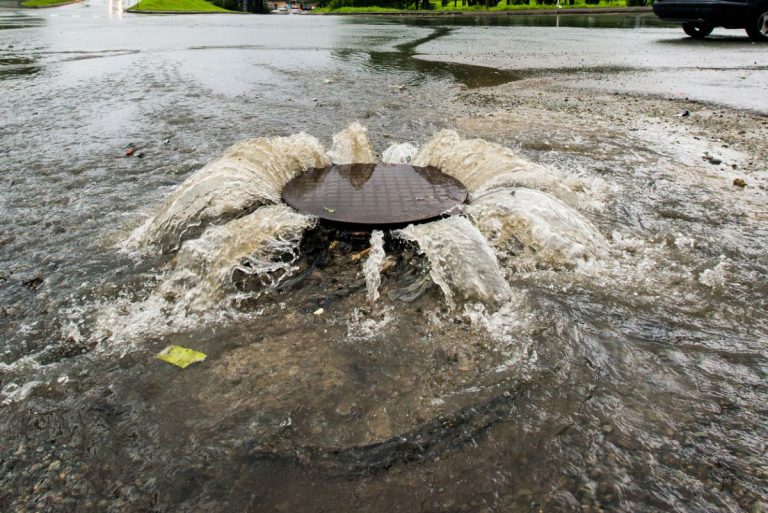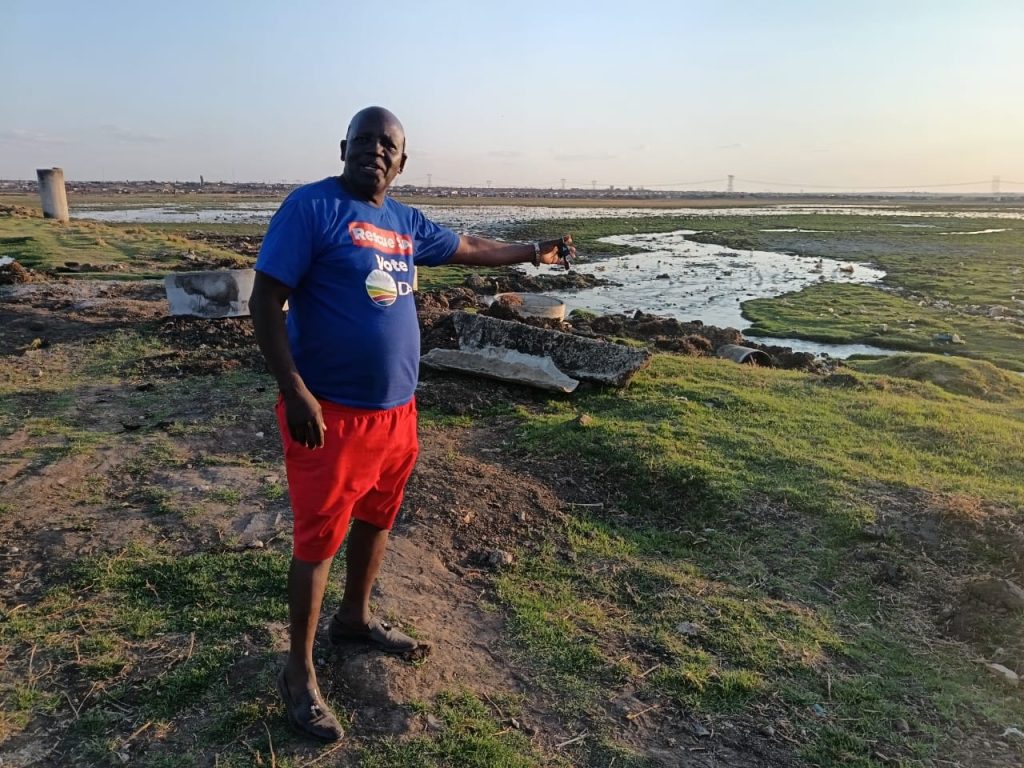
Cholera, Diarrhea, Dysentery, Hepatitis A, Typhoid, and Polio are all diseases linked to contaminated water and poor sanitation.
Absent, inadequate, or inappropriately managed water and sanitation services expose individuals to preventable health risks. The statement is quite clear, dirty water can make you sick.
Safe and readily available water is important for public health, whether used for drinking, domestic use, food production, or recreational purposes. Improved water supply and sanitation and better management of water resources can boost countries’ economic growth and contribute greatly to poverty reduction.
For several years there had been media reports on the contamination of the Vaal River. These reports mainly focused on the towns and businesses around the Vaal River and not on towns and businesses further away.
The Bulletin received several complaints and reports on contamination from the whole of Govan Mbeki Municipality (GMM) as well as Standerton (Lekwa)
For years these two towns have been major contributors to sewage contamination of the streams and rivers leading to the Vaal River. The focus had not been on other towns that contribute to the Vaal River system.
Residents in these areas are fed up with the sewer spillages. The Bulletin spoke to DA Councillor Thomas Mazibuko regarding the problems in eMbalenhle.

We asked him what the residents were saying and how they coped with the stench etc.
“A resident said that the Executive Mayor is aware of the issue as they saw him during the ward,” said Mazibuko, “he promised to do something but nothing was done.”
Another resident said that she was born in 1986 and as long as she can remember there were always sewer spillages.
“A resident told me that their parents left because they fell ill,” said Thomas, “Sometimes the municipality does clean the drain but it only lasts for a day or 2 then back to blockage again and the municipality is aware of those facts, The (residents) live, walk and sleep in sewer and that puts their health at high risk. Their feet are swollen, and they have body pain and headaches, they suspect that it is because of the sewer spillages, but they could not produce any proof to this effect.”
The problem, however, is not new. A while ago a statement was made to The Bulletin that every stream in GMM, bar one near Greylingstad, is contaminated.
It was difficult to believe but it appears to be the truth!
So, how, where and with what are the rivers and streams being polluted in GMM?
The main culprit would be sewage pollution caused by inadequate preventative and corrective measures implemented by municipalities such as GMM and Lekwa.
GMM has recently been fined R200m for contaminating the water with sewer.
This comes as the Bethal magistrate’s court sentenced the municipality to a fine after it was found guilty of six counts of environmental violations including contravening the National Environmental Act (NEMA)107 of 1998 and the National Water Act 36 of 1998; failing to comply with a compliance notice; the unauthorised disposal of water and committing an act that detrimentally affects water resources.
Mpumalanga National Prosecuting Authority (NPA) spokesperson Monica Nyuswa said the municipality had committed an act which caused significant pollution to the environment between November 2019 and September 2020.
Nyuswa said “the disposal and distribution of effluent, raw and untreated sewer” had been released into the Emzinoni location, eMbalenhle wastewater treatment plant, Trichardt Spruit, Wela Mlambo, Leandra N17 Pump station, Waterval Hoek River, Blesbok Spruit and Groot Spruit.
The municipality was further ordered to repair all equipment identified by the contractor on or before December 2026 and install weighbridges to all landfill sites on or before May 30 2025.
The Bulletin received footage on sewer spillages in GMM and it is appalling, to say the least. We tried to visit every spill point but there are just too many.
If the “disposal and distribution of effluent, raw and untreated sewer” into our waterways was the reason for the first fine, what would happen should there be new charges and convictions?
Farmers downstream from GMM have been complaining about the deteriorating water quality of the streams. They state that they now must take measures to restrict their livestock from drinking the river and stream water. “Some of my cattle died,” said one farmer to The Bulletin. They all asked to stay anonymous when speaking to The Bulletin.
There were dead fish and foam in all areas of the river. “The foam balls are much bigger in the morning,” said the one farmer.
The Bulletin put the Municipal Manager and one of the farmers in touch with each other and the Municipal Manager (MM), Mr Elliot Maseko, visited the farmer on his farm. The MM immediately put some measures in place to alleviate the problem, but it may be way too late. The ecological damage done to the river ecosystem will take a long time to recover if it ever will.
The problem with sewer spillages is not a new one.
GMM received a SAHRC (South African Human Rights Commission) report dated 6 December 2019 after complaints were lodged against Lekwa GMM and Nkomati municipalities. Some of the complaints date back to 2012.
Here are some excerpts from the SAHRC report supporting the above
9. INVESTIGATIVE PROCESS IN RELATION TO THE COMPLAINT AGAINST THE THIRD
RESPONDENT
9.1. After receipt of the initial complaint from Mr Pretorius in 2012, the Commission addressed an allegation letter to the Third Respondent on 13 September 2012, inviting a response to the allegations that had been levelled against it. No response was received from the Third Respondent.
The damning report was very clear that the municipalities have not lived up to what was expected of them in terms of Service delivery and in terms of securing a healthy environment for its residents.
9.3. On 6 February 2018, following the receipt of the third complaint by the Third Complainant in this matter, the Commission addressed a follow-up letter to the Third Respondent on 8 February 2018, in terms of which it sought a progress report on the implementation of the projects it undertook to implement in 2013. A progress report was, however, not forthcoming. Instead of a progress report, in its letter of 9 October 2018, the Third Respondent provided the Commission with what appears to be a new project plan, with a reduced budget of R58 000 000. In the new project plan, the scope of the project was also reduced and segmented into 5 projects, covering the areas of eMbalenhle Ext 10, 16, 18, 19, 21 and 22.
9.6.2. A resolution had previously been taken by the municipal council to hold the contractor(s) and the responsible employees to account for the failures in the implementation of the project but was not carried out. To date therefore, no one has been held to account for the failures in the implementation of the project.
9.6.6. In view of these myriad of challenges, the Second Complainant proposed that the Third Respondent be placed under administration, in order to begin to resolve some of these challenges.
9.9.1.2. The impact of these sewage spillages on residents and the environment has been immense and has potential to cause waterborne diseases that may be harmful to both human health and the environment.
11.6. It can hardly be gainsaid that exposure to sewage spillages has an adverse impact on human health and wellbeing. Not only is untreated sewer aesthetically offensive, it is usually accompanied by an unpleasant stench, as was observed during the Commission’s site inspections at the various municipalities. In addition, the release of air-borne disease from exposed sewage is more than likely to affect the health of people and vulnerable groups such as children, and older persons quite adversely. The pollution of scarce water resources with untreated or inadequately treated sewage also has an adverse impact on human health and wellbeing. Not only are the users of such water directly exposed to disease and infirmity, the environmental degradation that results from the pollution also offends the mental wellbeing of the locals and other environmentally conscious persons world over, and is a cause for serious anxiety. It was therefore rightly conceded by the Respondents that the ongoing challenges of sewage spillages and the inadequate treatment of waste water at the municipalities under investigation have had an adverse impact on the affected residents’ health and wellbeing. The municipalities under investigation therefore violated residents’ rights in terms of section 24(a) by failing to provide sanitation services in a manner that does not cause environmental degradation or pose harm to residences’ health and wellbeing.
13. FINDINGS
13.1. In light of the above, the Commission makes the following findings:
13.1.1 The First to Third Respondents are in violation of section 24(a) and section 10 of the Constitution, as a result of their continued failure to effectively address the challenges of sewage spillages and the inadequate treatment of effluent within their jurisdictions.
13.1.2 The First to Third Respondents are in breach of their obligations in terms of section 19 of the National Water Act and Section 28 of NEMA respectively, as a result of their failure to prevent and remedy the effects of environmental pollution, in the course of providing sanitation services to their residents.
14.1.4.4. Within three (3) months of this report, the First to Third
Respondents must:
i)develop and submit their sanitation master plans to the Commission; and
ii) submit their time bound plans for the remediation of the environmental damage caused (particularly to the water resources) by the sewage spillages and the discharge of inadequately treated effluent into the water course.
Water is vital for life and makes up 50% (females) to 60% (males) of an adult’s body weight. Physiologically, water is the main constituent of cells, tissues, and organs. It supports numerous biological processes and ensures homeostatic functioning by acting as a building material, solvent, participant in enzymatic reactions, transporter of nutrients and wastes, thermoregulator, lubricant, and an essential component of blood.
Drinking water contains nutritionally beneficial minerals such as sodium, potassium, calcium, magnesium, and phosphate. People obtain the majority of their mineral needs from food, but water containing these minerals represents a useful supplement.
Sufficient, safe, acceptable, physically accessible, and affordable water for personal and domestic use is recognized by the United Nations as a fundamental human right. Lack of water as a fundamental resource is associated with emotional distress and negative mental health outcomes
Read more about the Water and Sanitation Master Plan here: https://www.govanmbeki.gov.za/wp-content/strategic_documents/water_sanitation_master_plan2021.pdf
Costs of purifying water by Rand Water have slowly escalated over the last few years. Soon water will also be very expensive and may even be unusable for human consumption.